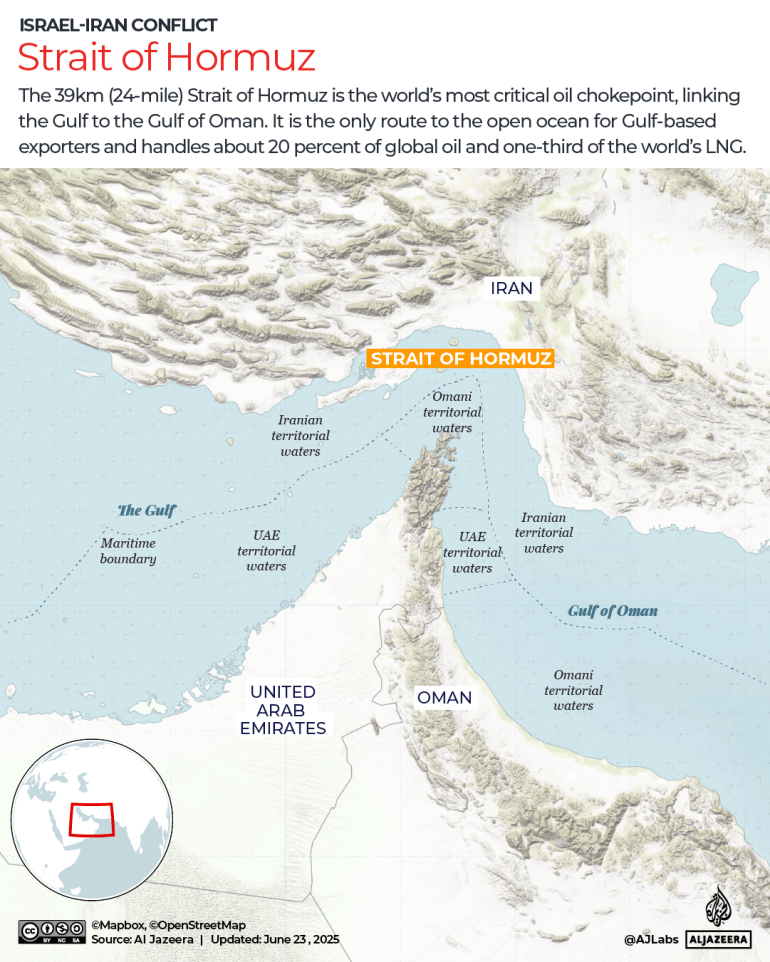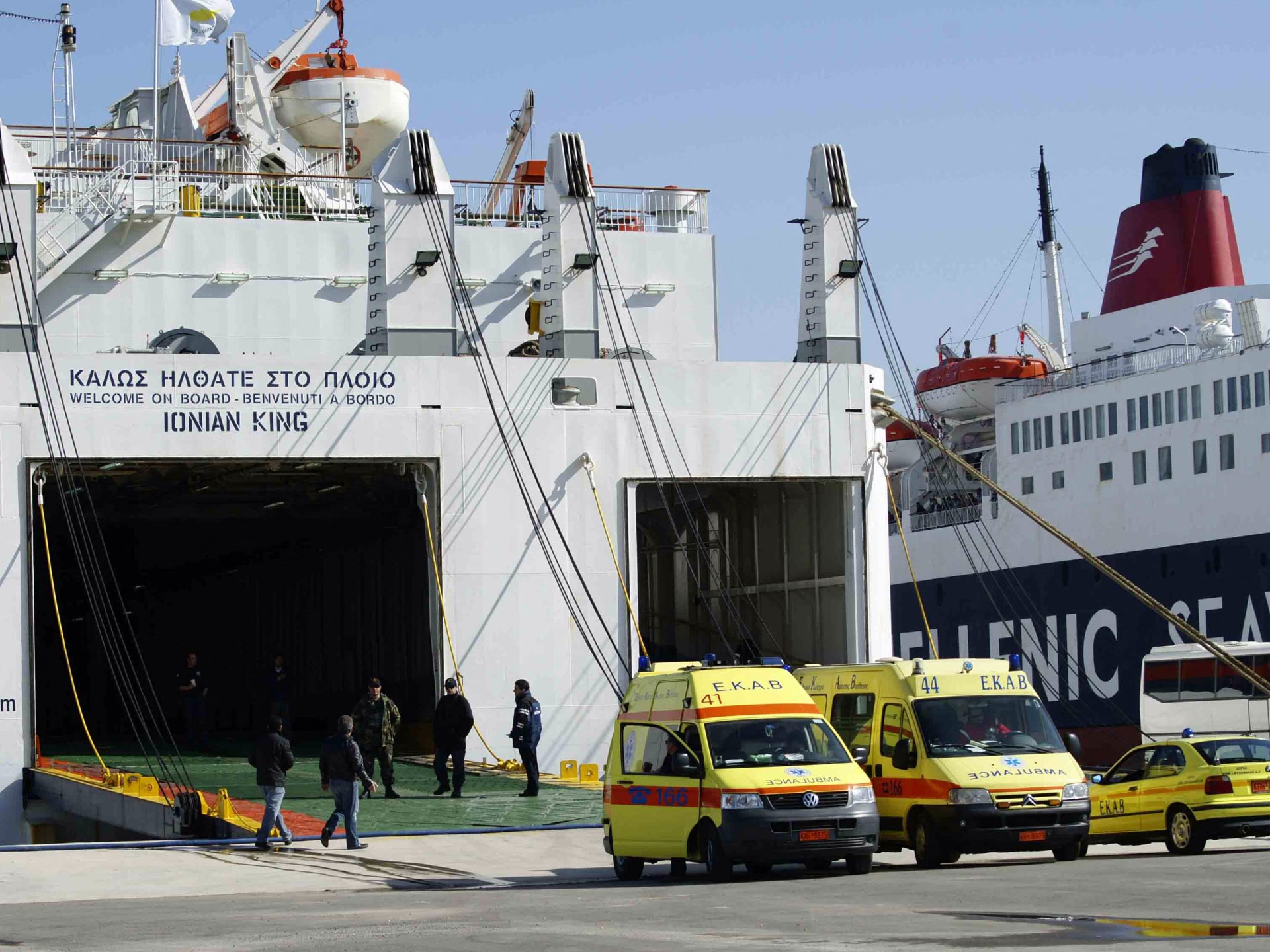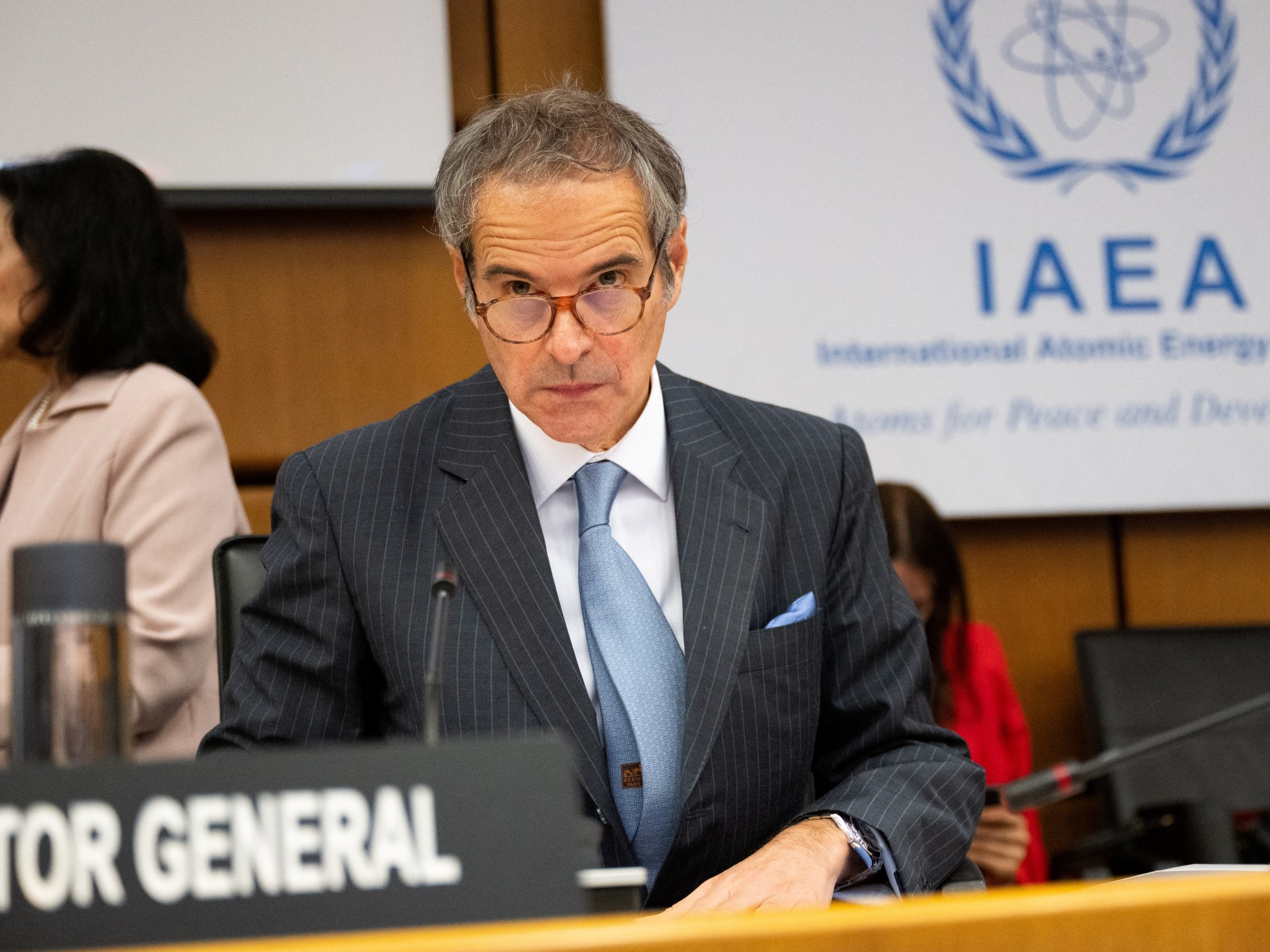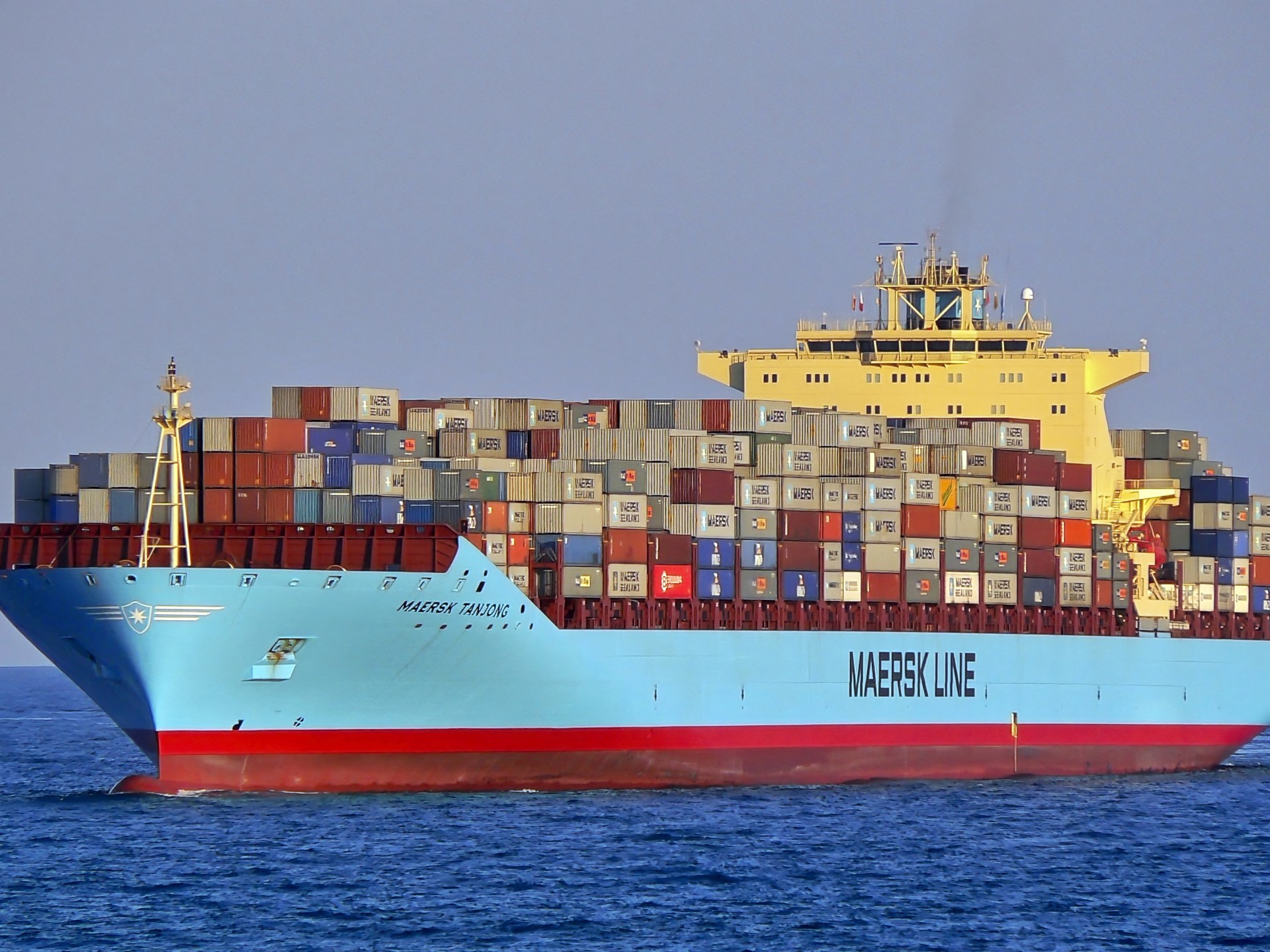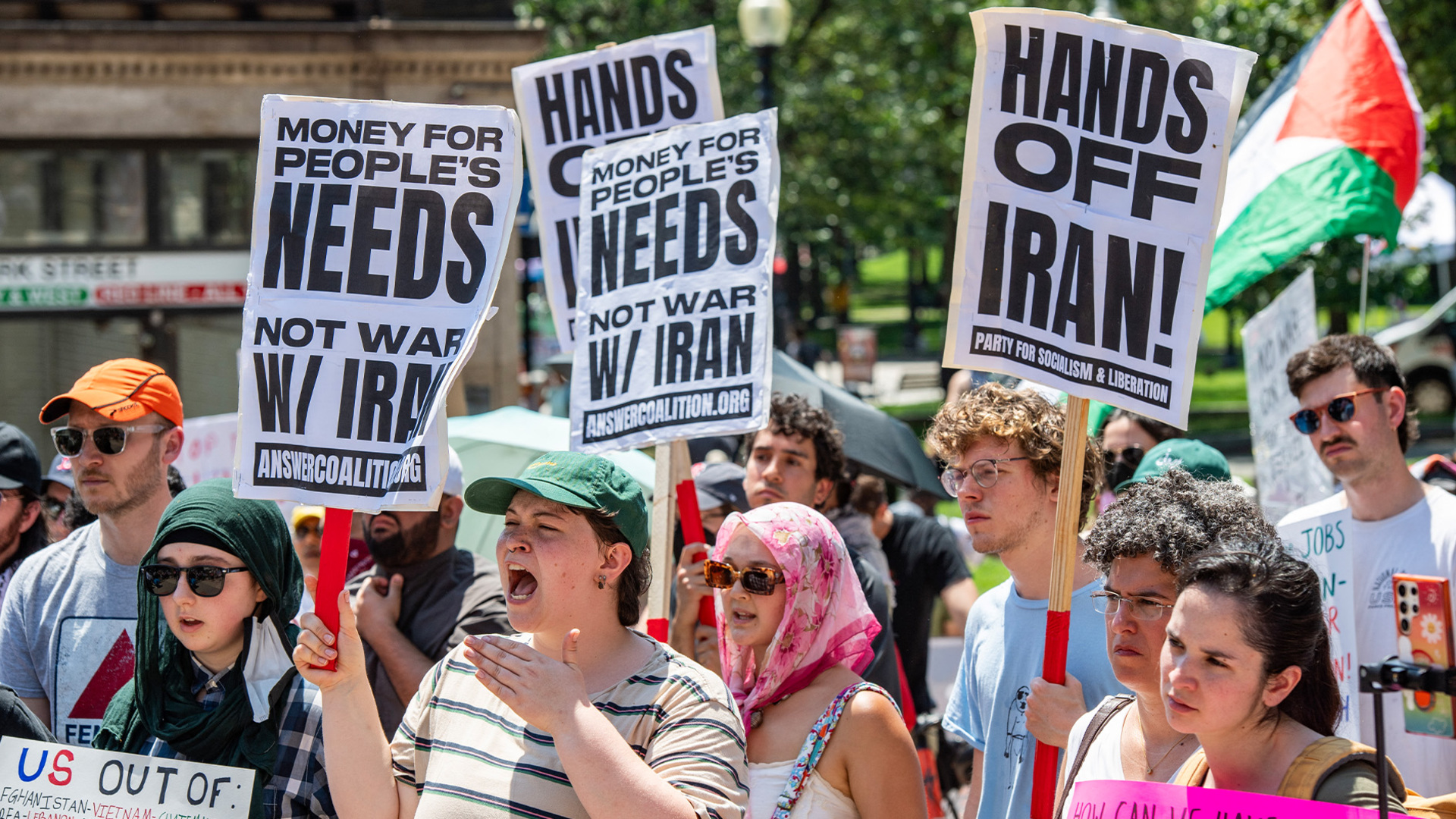Amid Israel’s ongoing attacks in Gaza and Iran, US President Donald Trump’s unprecedented decision to bomb three Iranian nuclear sites has deepened fears of a regional conflict in the Middle East.
Over the weekend, the United States military carried out its first known strikes against Iran since the 1979 Islamic Revolution toppled pro-Western Mohammad Reza Pahlavi.
Tehran has vowed to respond, prompting fears of escalation.
During an address to a meeting of the Organisation of Islamic Cooperation (OIC) in Istanbul, Turkiye on Sunday, Iran’s Foreign Minister Abbas Araghchi said the US crossed “a very big red line” by attacking Iran’s nuclear facilities.
One way Iran could retaliate is to shut the Strait of Hormuz, a vital trade route where one-fifth of the world’s oil supply – roughly 20 million barrels – and much of its liquified gas, is shipped each day. That would lead to a surge in energy prices.
So, what do we know about the strategic passage, and can Iran afford to block it in response to the US and Israeli aggression?
What is the Strait of Hormuz?
The Strait of Hormuz lies between Oman and the United Arab Emirates on one side and Iran on the other. It links the Persian Gulf with the Gulf of Oman and the Arabian Sea beyond.
It is 33km (21 miles) wide at its narrowest point, with the shipping lane just 3km (2 miles) wide in either direction, making it vulnerable to attack.
Energy traders have been on high alert since Israel launched a wave of surprise attacks across Iran on June 13, fearing disruptions to oil and gas flows through the strait.
While the US and Israel have targeted key parts of Iran’s energy infrastructure, there has been no direct disruption to maritime activity in the region so far.
Still, even before the US strikes on Saturday, the escalation of the conflict between Israel and Iran had sparked ocean freight rates to surge in recent weeks.
Freight intelligence firm Xeneta said average spot rates have increased 55 percent month-over-month, through to last Friday.
Who would need to approve the closure?
Iran has in the past threatened to close the Strait of Hormuz, but has never followed through on the threat.
Iran’s Supreme National Security Council must make the final decision to close the strait, Iran’s Press TV said on Sunday, after parliament was reported to have backed the measure.
However, the decision to close the strait is not yet final, as parliament has not ratified a bill to that effect.
Instead, a member of parliament’s National Security Commission, Esmail Kosari, was quoted in Iranian media as saying: “For now, [parliament has] come to the conclusion we should close the Strait of Hormuz, but the final decision in this regard is the responsibility of the Supreme National Security Council.”
Asked about whether Tehran would close the waterway, FM Araghchi dodged the question on Sunday and replied: “A variety of options are available to Iran.”
In his first comments since the US strikes, Iran’s Supreme Leader Ayatollah Ali Khamenei said that Israel has made a “grave mistake” and “must be punished”, but did not make any specific reference to either Washington or the Strait of Hormuz.
How would the closure work in practice?
Iran could attempt to lay mines across the Strait of Hormuz.
The country’s army or the paramilitary Islamic Revolutionary Guard Corps (IRGC) may also try to strike or seize vessels in the Gulf, a method they have used on several occasions in the past.
During the 1980s Iran-Iraq war, the two sides engaged in the so-called “Tanker Wars” in the Persian Gulf. Iraq targeted Iranian ships, and Iran attacked commercial ships, including Saudi and Kuwaiti oil tankers and even US Navy ships.
Tensions in the strait flared up again at the end of 2007 in a series of skirmishes between the Iranian and US navies. This included one incident where Iranian speedboats approached US warships, though no shots were fired.
In April 2023, Iranian troops seized the Advantage Sweet crude tanker, which was chartered by Chevron, in the Gulf of Oman. The vessel was released more than a year later.
What would it mean for the global economy?
US Secretary of State Marco Rubio on Sunday called on China to encourage Iran to not shut down the Strait of Hormuz after Washington carried out strikes on Iranian nuclear sites.
Speaking to Fox News, Rubio said: “It’s economic suicide for them if they do it [close the strait]. And we retain options to deal with that, but other countries should be looking at that as well. It would hurt other countries’ economies a lot worse than ours.”
For starters, shutting Hormuz risks bringing Gulf Arab states – which have been highly critical of the Israeli attack – into the war to safeguard their own commercial interests.
Closing the strait would also hit China.
The world’s second-largest economy buys almost 90 percent of Iran’s oil exports (roughly 1.6 million barrels per day), which are subject to international sanctions.
According to Goldman Sachs, a blockade of the Strait of Hormuz could push oil prices above $100 per barrel. That would push the cost of production up, eventually affecting consumer prices – especially for energy-intensive goods like food, clothing and chemicals.
Oil-importing countries around the world could experience higher inflation and slower economic growth if the conflict persists, which could prompt central banks to push back the timing of future rate cuts.
But history has shown that severe disruptions to global oil supplies have tended to be short-lived.
Before the start of the second Gulf War, between March and May 2003, crude oil surged by a whopping 46 percent at the end of 2002. But prices quickly unwound in the days preceding the start of the US-led military campaign.
Similarly, Russia’s invasion of Ukraine in February 2022 sparked a sharp rally in oil prices to $130 a barrel, but prices returned to their pre-invasion levels of $95 by mid-August.
